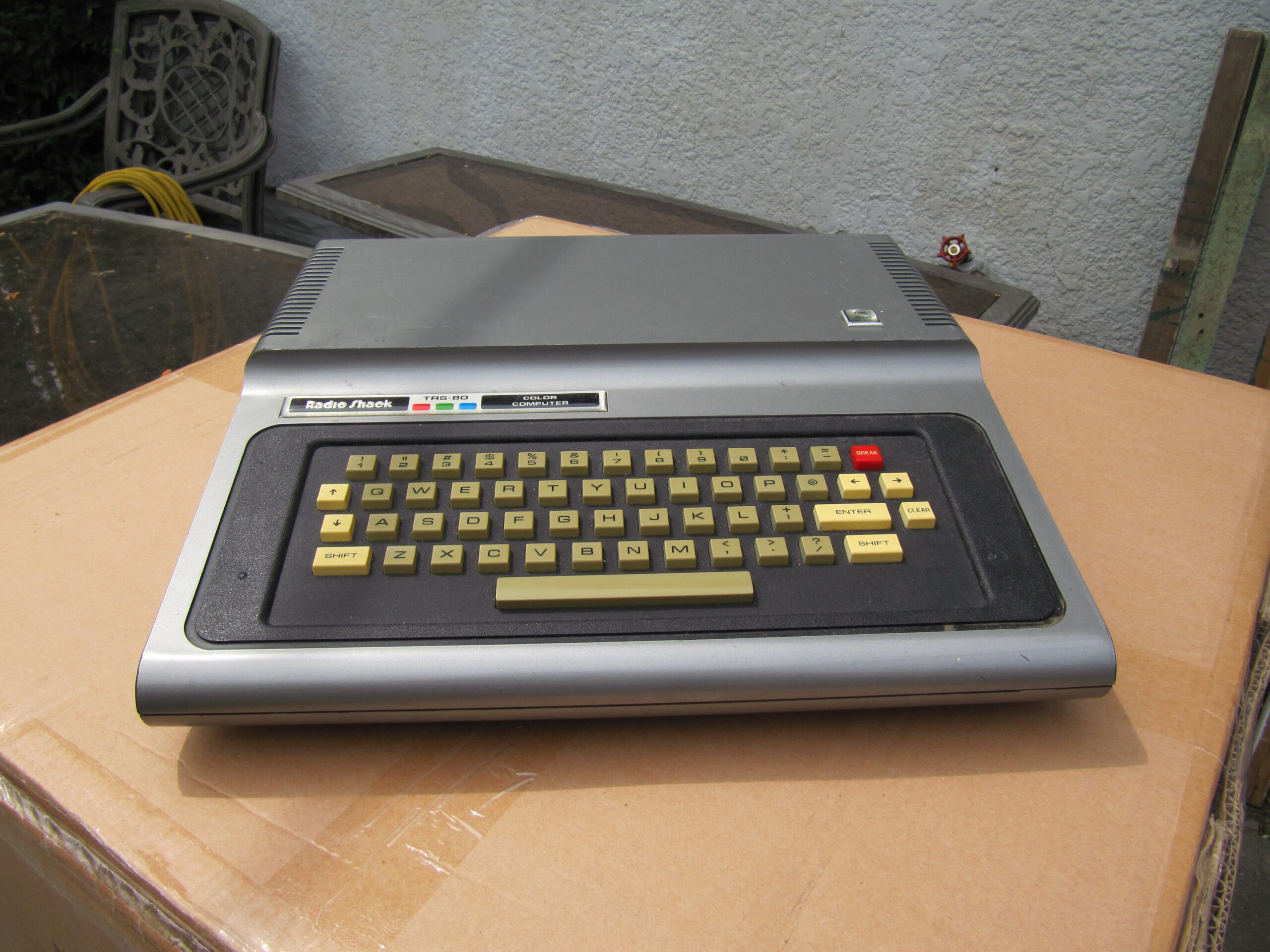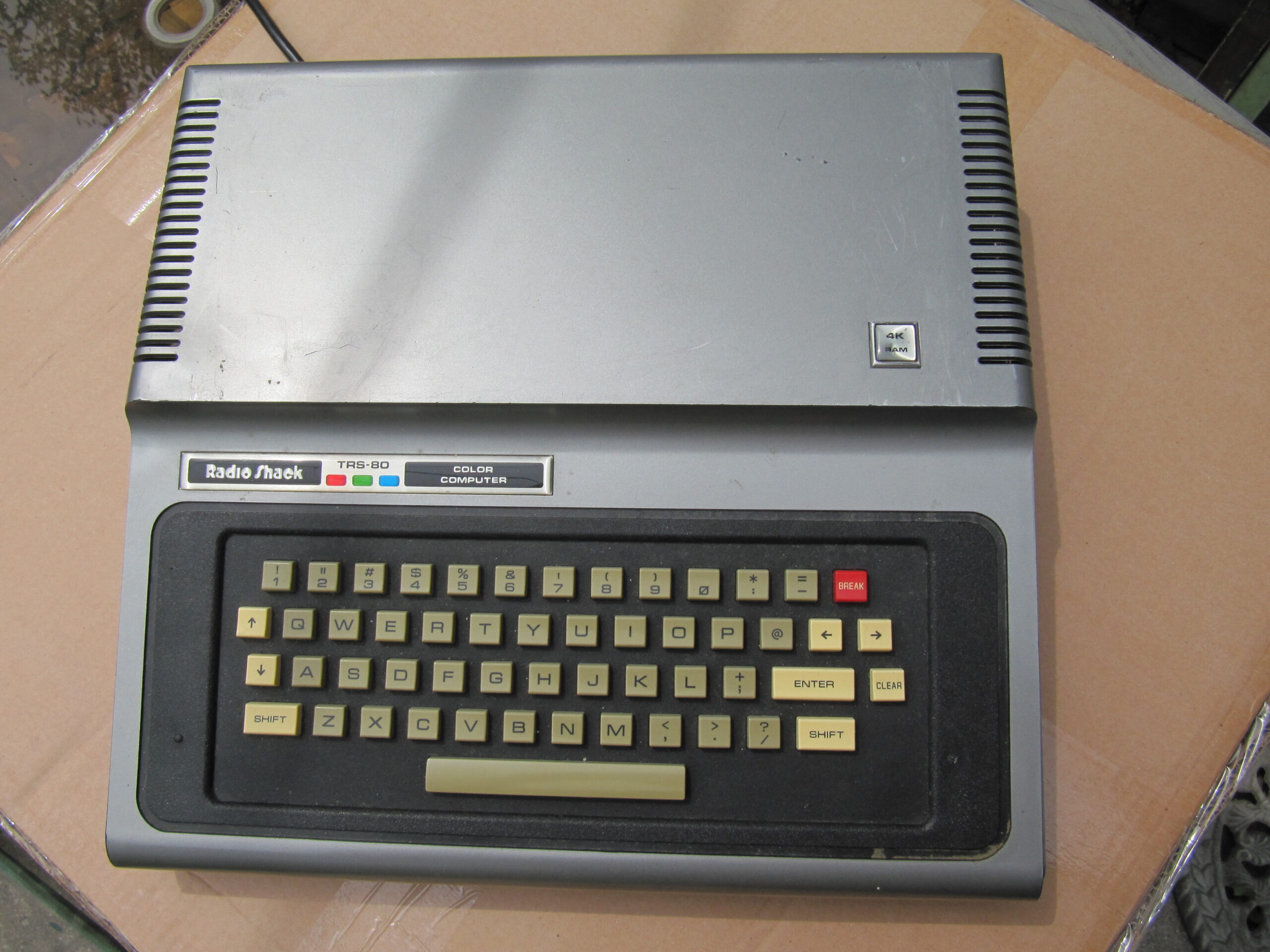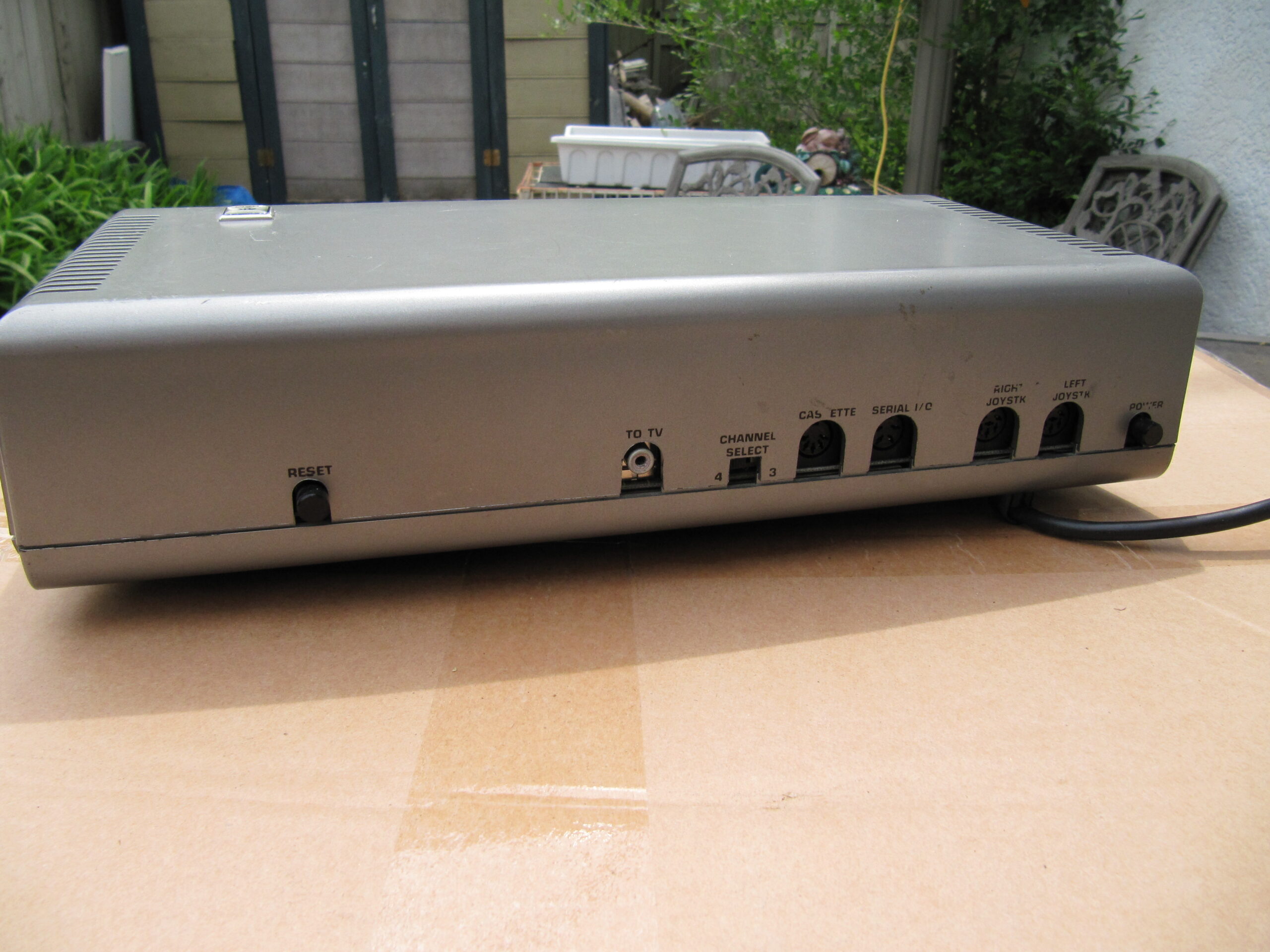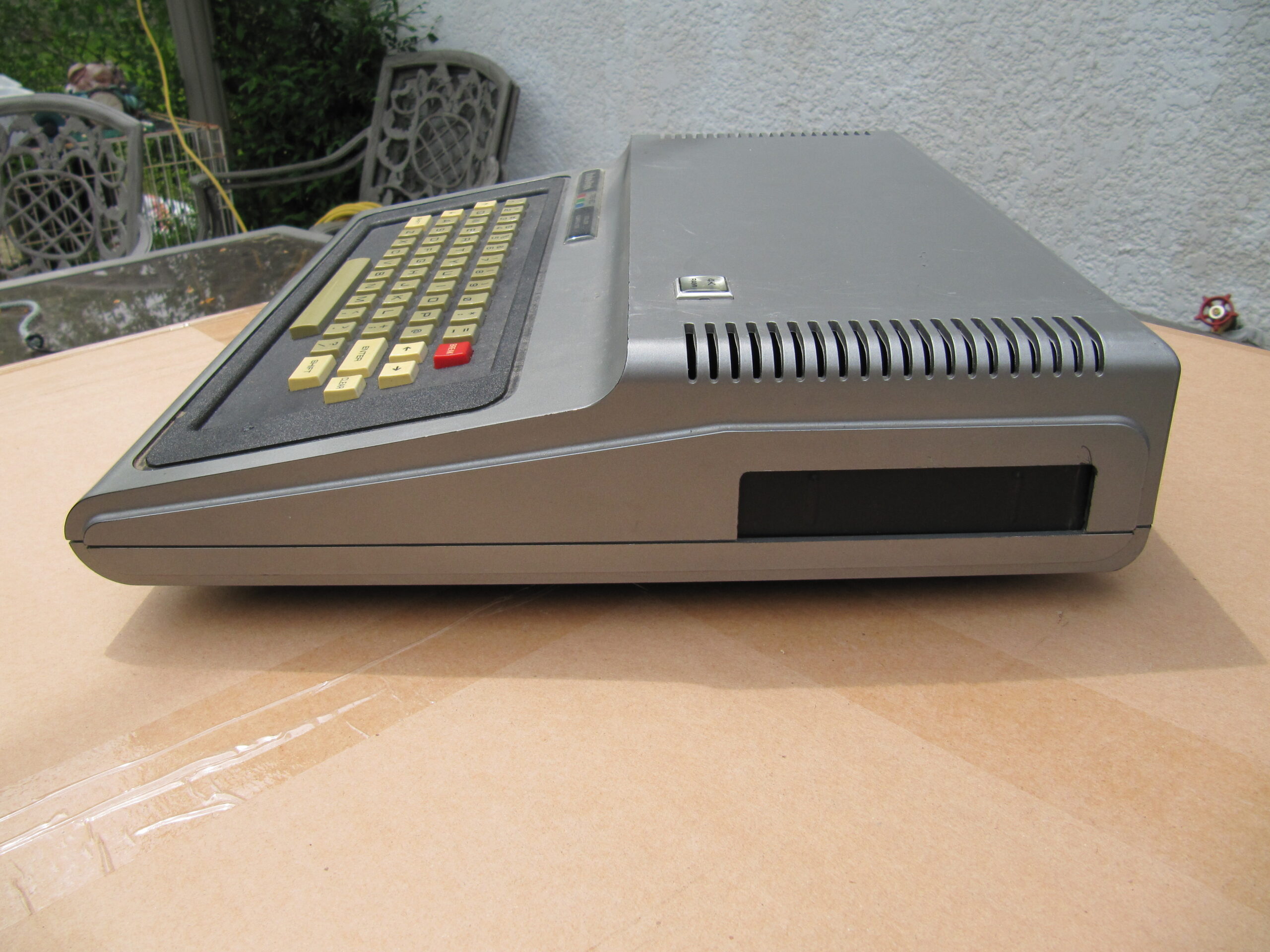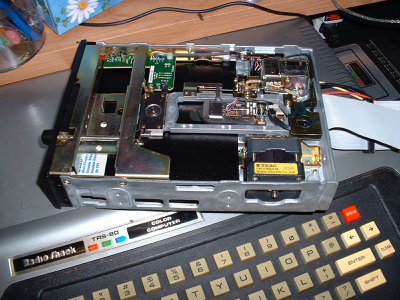In the past 5 months, I have been playing with an old Color Computer (CoCo 1) I had acquired well over a decade ago. I had not bothered to plug it in, after having received it for free from someone. It had been left in a nifty if not odd carrying box that possibly the old owner had created. The box held the CoCo 1, a cassette tape drive, and a 300 baud dumb modem, along with some room for some cassette tapes, a floppy drive controller cartridge (FDC), no floppy drive though, and of all things the service manual for the computer complete with schematic diagrams. I will be adding pictures in a future edit.
For those of you who don’t know, there were three different models of Color Computers, the CoCo 1, CoCo 2, and CoCo 3. For the purpose of this posting I do not consider revisions to the circuit boards different models though some may argue otherwise.
The CoCo 1 I have is a revision E motherboard, had 16K of RAM when I originally got it, and Color Basic 1.1. The circuit board had jumpers that allowed the system to be configured to use up to 32K of RAM with the correct DRAM chips. These jumpers lead me to search out on the internet sites that had information for upgrading the CoCo 1 to see if one could use more than 32K of RAM. As it turns out the CoCo 1 could address at least 64K of RAM, with some modifications to the circuits. One of the sites I found was a mailing list archive located at http://five.pairlist.net/mailman/listinfo/coco. The members of that mailing list were very helpful and knowledgeable. My searching also lead me to discover many of the CoCo related links you will find on the right hand column of this site.
Until I had joined the CoCoList for Color Computer Enthusiasts I had not been able to get the FDC to work with any of the floppy drives I had. It was with the help of those on the mailing list that I was able to discover that if you want to use the FDC with a CoCo, you needed to have the Extended Color Basic (ECB) ROM installed on the main circuit board. Why on earth one would need to have to install a ROM chip into the main circuit board to use a FDC that had it’s own ROM chip I will never understand (Well maybe I do.). I was able to acquire an ECB ROM from one of the list members, along with some 64K x 1 DRAM chips that I used to upgrade the RAM in the CoCo 1 from 16K to 64K. The CoCo 1 revision E board uses a bank of 8 DRAM chips, depending on the jumper settings these DRAM chips can be of the 4K x 1, 16K x 1, 32K x 1 (not really sure these exist), and 64K x 1 varieties.
Interestingly the 64K x 1 chips were commonly used by Tandy / RadioShack in the 32K versions of the CoCo 1. The CoCo 1 had a jumper on the main circuit board that allowed the selection of the upper or lower 32K bank in the RAM. This jumper was there according to other websites and resources so that the 64K x 1 DRAM chips that had failed in either the upper or lower banks could be grouped together in to matching sets that had either all good upper banks or all good lower banks. This apparently allowed for cost savings because the otherwise faulty RAM chips were able to be salvaged.
I was lucky enough to get several floppy drives working after receiving the ECB ROM. One of the floppy drives is a 720K 5.25″ DSDD 80 track drive, which currently only uses 35 tracks and only one side. Also several of my 3.5″ DSHD and DSDD drives work as 35 track single sided units. I am able to format, save to and load from the diskettes I put in these drives.
Part of the reason I upgraded the CoCo 1 to 64K of RAM was so that I could use NitrOS-9 which is a community developed OS-9 clone that has multi-user capabilities. NitrOS-9 is still actively developed and availble, though Microware’s OS-9 is no longer being provided by Microware. One of the requirements for NitrOS-9 was 64K of RAM. After using an old AMD 486 DX4-75 laptop running DOS to transfer a NitrOS-9 disk image to floppy I was able to successfully boot the CoCo 1 up into NitrOS-9. I have to admit that the CoCo 1 using inverse characters to represent lower case versus upper case characters is ummm, shall we say ugly.
The get your hands dirty type of hardware upgrades /modifications, that involve using a soldering iron certainly place this unit into the class of a retrocomputing. Super ugly text certainly adds to the experience. The CoCo user community seems to be very strong and from what I can tell from the CoCoList for Color Computer Enthusiasts postings is also very global. Please all you CoCo website owners out there, do not be offended that I did not link to you in this article or make reference to each of your sites. I certainly found a large number of CoCo user groups and websites during my searches and they all provided value, heck some of the sites are even linked to in the right hand column and more will eventually find their way there.
That’s it for now.
Regards,
Ryan Pritchard
Fun Extends All Basic Life Expectancies
